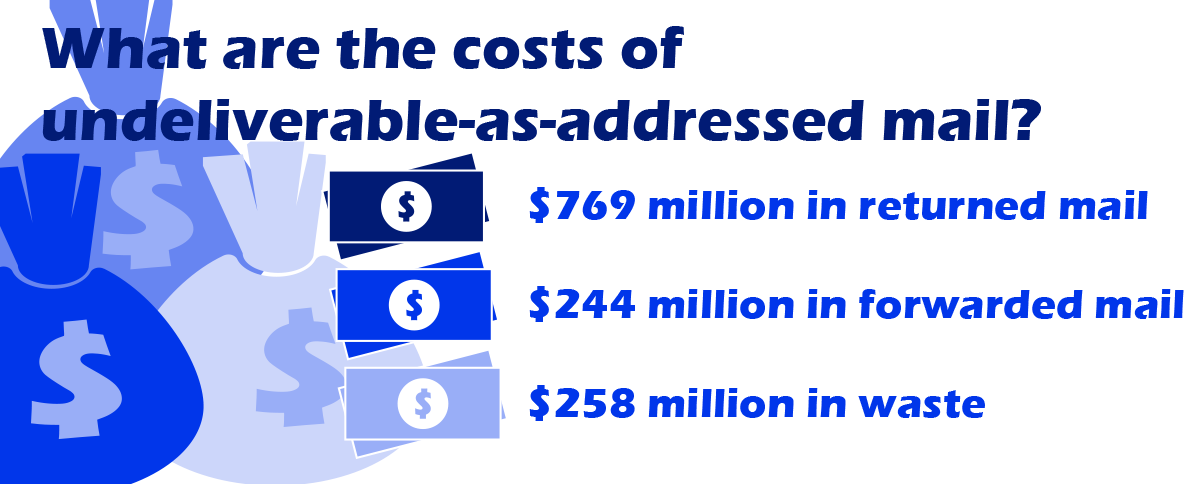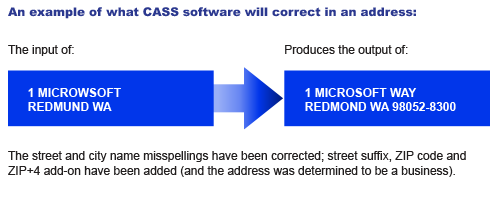Addresscorrectionverificationvalidation
Address validation or address verification is the process of checking a postal address to see if it is valid. Verifying addresses is an essential part of the mass mailing process, reducing waste and saving money for the sender. Addresses are checked against a database (often based on guidelines provided by the postal service of the country where the address resides or from the Universal Postal Union or UPU, a UN agency) to see if it matches the entry in the database. If the address in question matches it is considered validated and is a real address.
Addresses that don’t match are considered invalid. This could be because the address doesn’t exist, the information in the address was entered incorrectly, or it does exist but isn’t registered with the controlling postal authority.
Because address formats vary from country to country, a database is available that can be used to check addresses for most countries. And even though the way addresses are written can change based on what country you’re in, the process for validating an address is always the same: checking the address against the database to see if it is valid or not.
In the United States, the United States Postal Service (USPS®) provides the definitive database for verifying addresses.

The Address Validation Process
Address validation begins with parsing and standardization. Parsing is breaking down an address into its basic elements such as house number, street name, city, state, and ZIP Code™ – among others. Once the address is parsed and all the necessary components are present, the address is standardized. The standardization process includes correcting misspellings, adding missing elements such as ZIP codes or street suffixes, and converting to official USPS abbreviations. For example, “Bronw Street” would be corrected to “BROWN ST”, or Pennsylvania would be changed to PA.

Once the standardization process is complete, the address is compared to the official database to see if there’s a match. If the match exists in the database, the address is considered validated. If there’s no match it is invalid, but just because an address is labeled invalid doesn’t necessarily mean it’s not a real address. Some addresses may not exist, for example, a fake address, an address of a building that does not exist, or an address that has so many mistakes that it cannot be corrected. Some addresses, however, may simply not be registered and in the database. These could be new buildings or subdivisions that just aren’t in the database yet, or are vacant, or buildings with no occupants. These addresses exist, but since they don’t receive mail they aren’t registered and therefore can’t be validated.

What is CASS
The Coding Accuracy Support System (CASS™) is the system the USPS uses to evaluate the accuracy of and then certify address validation software. CASS can be utilized by any organization that would like the USPS to evaluate the quality of their address-matching systems, although most users of this software license a previously CASS certified system from a 3rd party software vendor. CASS Certification must be renewed annually with the USPS to meet current CASS Certification cycle requirements and the USPS maintains a list of CASS Certified products and vendors on their website. The USPS inplemented it's most recent version of CASS, Cycle O, in 2023.
More Information about international address validation can be found here:
CASS Certified products:
- Correct and standardize addresses.
- Add missing address information, such as ZIP codes, cities, and states
- Perform delivery point validation to verify whether or not an address is deliverable
- Check against the USPS Locatable Address Conversion System (LACSLink) to update addresses that have been renamed or renumbered.

Related Links
Manage Mail & Reduce CostsManage Parcels & Packages
Geocoding
White Paper - Address Data Quality
Article - Direct Mail vs. Digital
Article - The Importance of Data Cleansing
Article - Why Do I Get ‘Undeliverable as Addressed’ or ‘Unable to Forward Mail’?
Article - USPS Unique Zip Codes
Article - Vanity and Prestige City Names



